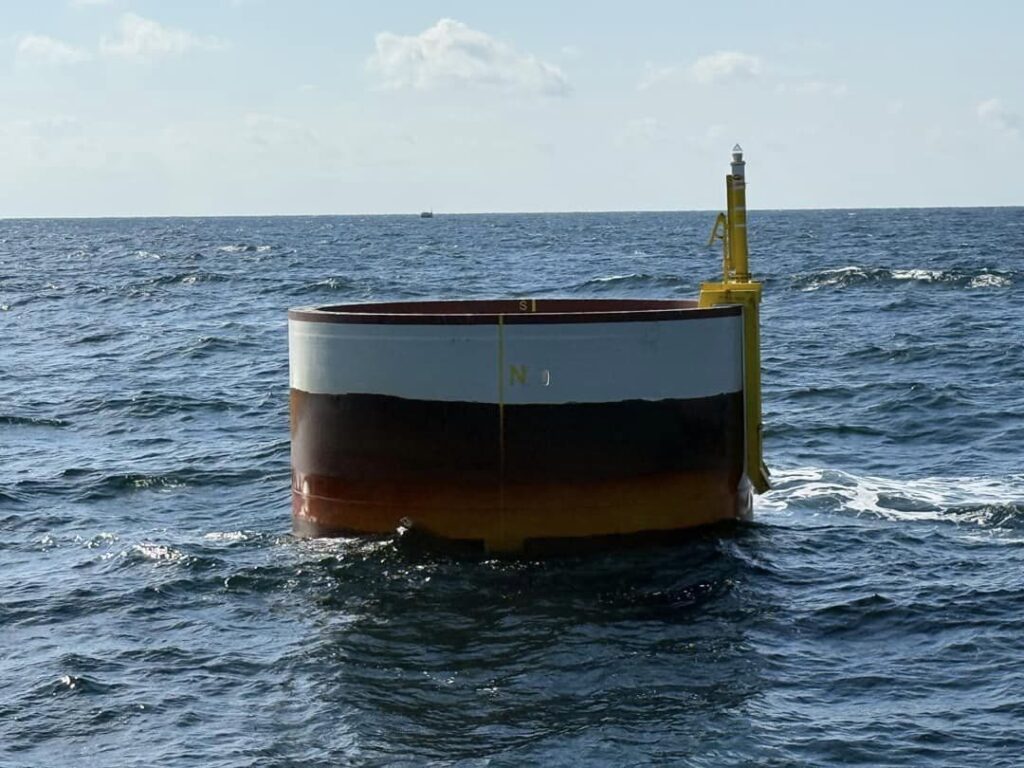While legal battles rage over offshore wind development off the coast of New Jersey and Ocean City, Maryland, the nation’s largest offshore wind project construction is well underway in Virginia.
Dominion Energy has announced the successful completion of their first monopile installation season for the 2.6-gigawatt Coastal Virginia Offshore Wind (CVOW) project. Installation of the gigantic monopile foundations began in May, and subsea cable installation (for bringing electrical current onshore) began in August. By the end of October, the company has installed 78 monopile foundations and 4 offshore cable substation foundations. The company’s initial objective had been to set at least 70 monopiles into the sea floor of the project area, 27 miles offshore in the Atlantic from Virginia Beach. The pause in monopile installation serves to avoid disturbing North Atlantic right whales during their migration period. It will resume in May 2025.
As of this month, CVOW construction is on budget and on schedule. For the next few months, the company’s focus will be installation of the first offshore cable substation, continued export cable lays and onshore transmission construction, and placement of transition pieces on top of monopiles, to prepare for turbine installation in 2025.
When complete and online in late 2026, CVOW will consist of 176 turbines that generate renewable energy to power up to 660,000 homes. It is the largest offshore wind project under construction in the United States. CVOW represents an opportunity for significant sustainable electric power for Virginia, as well as jobs, but it is also a huge project with many, many complex moving parts, so Dominion has a responsibility to get it right.
If you’re wondering how the project is mitigating possible disruptions to wildlife or other concerns, you can read their monthly reports.

As part of their obligation, Dominion publishes a monthly online Mariner’s Report on CVOW for all interested parties, including the public. Click here for the November report and here for the archive of earlier ones and other studies, such as the overall Construction Mitigation and Monitoring Plan for Protected Marine Species and this research paper on surf clams in the project area conducted by the Virginia Institute of Marine Science (VIMS).
The November report details planned operations for this winter, and breaks down what each various vessel’s role will be. The M/V Flintstone will install rocks to protect the installed foundations, the Cable Laying Vessel Livingstone will install cables into the lease area beginning 12nm offshore. The two that have already been trenched and installed stretch for nearly 45 miles in length. Two 500-foot-plus-long vessels, a Heavy Load Carrier and Heavy Lift Transport Vessel, will help.

A note about navigating around the construction and lease site areas: recreational activities in the area are not restricted unless construction is active. In that case, Dominion requests a 500-meter standoff distance. The company reminds mariners and the public that due to the nature of the construction activities, project vessels are often restricted in their ability to maneuver. The company also reminds mariners not to touch or tie off to monopiles and to keep an eye out for project vessels in the area.
For questions about access, the onsite project safety vessels can provide direction via VHF Marine 16 or reach out directly to the CVOW Marine Coordination Center (757-366-7000).
Meanwhile, the VIMS research vessel Bay Eagle will continue studying fisheries impact, along with F/V Thomas Reed and F/V Lady Isla. The two fishing vessels carrying out research belong to Tangier Island watermen who had previously been “conch potting” for knobbed whelks out of Virginia Beach before the project began. Their deep field knowledge is coupled with VIMS’ marine science expertise as research goes forward.
While research and cable laying go on offshore, Portsmouth Marine Terminal will continue taking delivery of large project components. Components delivered there to date include 104 monopile foundations, 52 transition pieces, 12 offshore substation pin piles, and 1 pin pile template.



